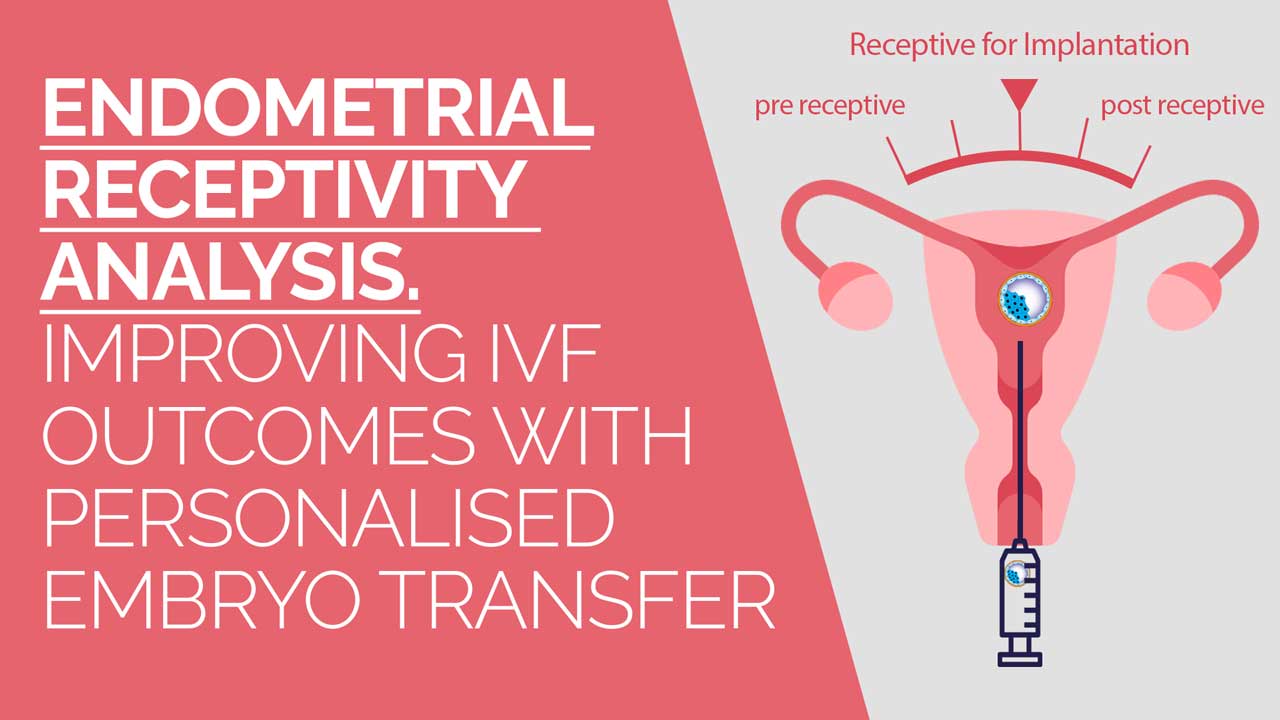

Role of Endometrial Receptivity in Implantation Failure In IVF
WHAT IS REASON FOR REPEATED IMPLANTATION FAILURE
20% of implantation failures can be attributed to unreceptive endometrium. This means the endometrium was functionally incompetent to receive the embryo at the time the transfer was done.
This happens in 5% of women undergoing IVF. All women have a window of Implantation or WOI – a period of 4 - 5 days when the endometrium is receptive or functionally competent to receive the embryo.
How is the date of Transfer planned in an IVF cycle? How accurate is it?
In a normal IVF cycle, the time of transfer is decided using a standard set of calculations – by following established morphological and biochemical criteria to evaluate endometrial development and receptivity.
Endometrial receptivity is the assessed basis of:
- Ultrasound markers of ER: endometrial thickness, character, volume, and blood flow patterns.
- Hormonal markers: by analysis of hormonal levels of estrogen and progesterone.
The Day of transfer determined by this means in a standard IVF protocol is accurate in 95% of cases.
But recent studies trying to understand the causes for repeated IVF implantation failures, have revealed that in 5% of women undergoing IVF the WOI would be displaced that is their endometrium would be either be receptive before or after but not on the day Transfer would be planed as per protocol. In these women, the embryo may fail to implant due to displaced WOI.
3 OUT OF 10 WOMEN undergoing IVF have a displaced window of Implantation leading to Implantation Failure.
WHAT IS WINDOW OF IMPLANTATION (WOI)
Human Implantation is a highly coordinated event that involves both embryonic and endometrial participation and is governed by multiple factors:
- The presence of a Normal Healthy Functional embryo,
- A functionally competent or receptive endometrium,
- Synchronized and successful molecular dialogue between the embryonic and maternal tissues.
- Immune protection from the host.
How long is the implantation window?
There is only a specific period of time during which implantation is possible this is the “implantation window”. In most successful of human pregnancies, the Implantation occurs roughly 8-10 days after Ovulation has occurred between Day 6 to Day 12 of embryo formation [2]. The Implantation window is the time when the endometrium is functionally competent to receive the embryo.
Why is the Human Window of Implantation Limited?
There are many conditions that must be satisfied in order for successful implantation to take place. The implantation window is started by preparations in the endometrium of the uterus, both structurally and in the composition of its secretions [3].
1. Adaptation of uterus: To enable implantation, the uterus goes through changes in order to be able to receive the embryo.
2. Preparation of Endometrium: The endometrium increases thickness, becomes more vascularized and its glands grow to be tortuous and boosted in their secretions. These changes reach their maximum about 7 days after ovulation.
It takes a complex series of molecular interactions involving proteins, biomolecules, cells, hormones to get the endometrium ready. This involves the cyclical switching on of around 248 genes that play a role in making the endometrium receptive. The endometrium has to become receptive in time and hence the changes have to happen in synchrony to ovulation. The Hormones released by the developing follicles in the ovaries play a major role in triggering the endometrial development cycle.
It takes a lot of vital energy for the body to prepare for a possible pregnancy so the body also has a mechanism of making sure there is no further loss of body’s resources if pregnancy doesn’t occur. Implantation should occur within 10 days of fertilization post which the endometrium starts to degenerate and is shed.
How to detect Displaced Window of Implantation?
The specific WOI of a woman and if there is any displacement in the WOI can be determined by analyzing the expression pattern of the 248 genes involved with endometrial receptivity.
Recent advances in Proteomics (studies the RNA expression patterns to detect the presence and levels of proteins and intron tell which genes are active at a particular time), Molecular genetics (DNA and RNA sequencing technology) has aided the development of new Genomic tools like Endometrial receptivity Array has made it possible to study the gene expression patterns of the 248 genes involved with endometrial receptivity. Since these genes are active only during the proliferative phase of the endometrium and will not be active on other days of the menstrual cycle the presence and levels of these proteins can be measured to see if the endometrium was receptive on the day the sample was analyzed.
ERA requires that the endometrial sample be biopsied on the day when the transfer would have been typically planned in the IVF cycle. This sample is then sent for ERA.
By studying the cyclical expression pattern of these genes it has been possible to determine which genes are active and are being expressed and accordingly determine the state of receptivity of the Endometrium on the day that the endometrial sample was biopsied. Furthermore, it is also possible to predict by how many days [if] the WOI is displaced and by how many days the transfer has to be either preponed or postponed in the next cycle.
To know more about ERA watch this Video: ERA by Dr. Rajeev Agarwal
Next Article Read: WHAT DOES IT TAKE FOR ENDOMETIUM TO BECOME RECEPTIVE FOR IMPLANTATION?
Article References:
- Endometrial receptivity and the window of implantation. Lessey BA1. Baillieres Best Pract Res Clin Obstet Gynaecol. 2000 Oct; 14(5):775-88.
- Wilcox AJ, Baird DD, Weinberg CR. Time of implantation of the Conceptus and Loss of pregnancy. N Engl J Med. 1999; 340:1796–9. [PubMed] [Google Scholar]
- Understanding the implantation window, a crucial phenomenon Alok Sharma and Pratap Kumar1. J Hum Reprod Sci. 2012 Jan-Apr; 5(1): 2–6.
Article Tags
About the author

Leave a Comment